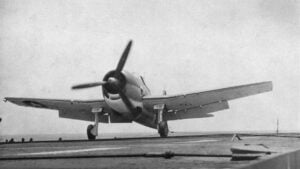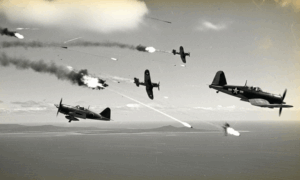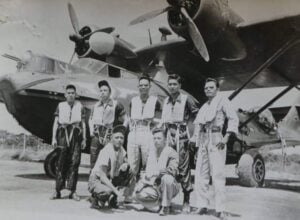How a Brilliant WWII Engineer Turned Ice Into a Lifeline for Allied Pilots

World War II Unfolded / YouTube
The Frozen Front
December 1942, Thule Air Base, Northern Greenland. The Arctic wind screamed across the runway, carrying snow that bit into the faces of the ground crews. The temperature had plunged to forty below zero, and even the aircraft engines seemed to resist the cold. Captain Gerald “Red” Anders, pilot of a Lockheed Hudson, leaned against the frozen metal of his bomber, staring across a landscape that looked more like the moon than Earth. Somewhere beyond the fjords, a weather reconnaissance crew had gone silent. Their last transmission broke mid-sentence. A rescue flight had to leave before dark.
But no pilot wanted to attempt a landing on ice. Wheels shattered, struts snapped, and aircraft disappeared beneath the snow without warning. Landing in the Arctic was as deadly as the enemy. Then, through the storm, a stocky man in a grease-stained parka approached the plane. His name was Ralph Plasted, a civilian engineer with a stubborn streak and a mind full of ideas. Dragging behind him were two steel frames shaped like sleigh runners. “They’re skis,” he said simply. “Try not to die on the first run.” Anders frowned. “You expect me to land a bomber on those?” Plasted shrugged. “Either that or walk to the crash site.”
The First Ice Landing
As mechanics worked under the bitter wind, sparks lit the snow. The invention looked absurd — a mix between a sled and landing gear — but the logic was sound. The steel runners would spread the weight of the bomber across the snow instead of cutting through it. When the engines roared, the Hudson slid forward and, against all expectation, lifted off smoothly. Plasted watched it vanish into the storm, wondering if he had just signed the pilot’s death warrant or created something entirely new.
Hours later, over the Greenland ice sheet, Anders and his crew fought the blinding white-out. The heater had failed, their hands were numb, and the horizon had vanished. Then, through a break in the clouds, Anders saw smoke — the downed weather crew. He circled, looking for a landing spot, then deployed the steel skis. The Hudson groaned as the skis locked into place. “You really trust that contraption?” the co-pilot muttered. Anders just nodded. They touched down with a shriek of metal, skidding, bouncing — and then, miraculously, steadying. The plane came to a halt near the survivors, who were waving beside a small fire. The rescue was frantic but successful, and soon the bomber lifted off again, leaving the first set of aircraft tracks ever burned into Greenland’s ice.

Turning an Idea Into a Weapon
Back in the United States, Plasted was sent to Wright Field, Ohio, to refine his design. The Arctic still clung to his clothes as military engineers circled his prototype, skeptical. Mounted under a Hudson bomber, the new “Mark II Arctic Landing Ski” looked deceptively simple — curved steel with shock absorbers and a waxed anti-freeze coating to prevent ice buildup. Tests were brutal. Metal cracked, welds failed, and planes nearly flipped. Yet Plasted refused to give up. Late at night, he adjusted angles, reinforced joints, and shaped the runners to mimic how snow bends under pressure.
Finally, one dawn, a C-47 transport tested the new skis on a frozen Ohio lake. It glided perfectly, no sparks or failures. When the plane lifted and landed again, the test crew erupted in cheers. Plasted didn’t smile. He only whispered, “Now she’s ready for the real cold.”
Into the White Again
By early 1943, Arctic patrol and rescue aircraft across the Allied bases were being fitted with Plasted’s gear. Missions that once meant certain death were now possible. In April that year, Lieutenant Harold Vance piloted a C-47 over East Greenland to locate a missing weather station. The radio died mid-flight, and visibility dropped to nothing. When they finally spotted firelight on a distant ridge, Vance ordered the landing skis deployed. The plane struck hard, bounced, then slid to a stop without breaking apart. The crew on the ground — frostbitten but alive — were rescued and flown back safely.
From the air, the C-47’s twin tracks curved gracefully across the snow, proof that ice no longer ruled the Arctic. The official report was brief: “Successful landing. Ski gear operational. Zero casualties.” But to Ralph Plasted, it meant something deeper — his field experiment had become a lifeline.

A Quiet Victory
By the summer of 1943, over fifty Allied aircraft carried Plasted’s Arctic ski system. They delivered supplies, rescued stranded crews, and built weather stations that guided transatlantic convoys and bombing routes. His creation never fired a weapon, but it helped win battles that depended on endurance and ingenuity. Standing on the runway at Thule as another C-47 roared into the pale sky, Plasted watched the silver skis flash beneath the plane and noted in his field book: “Test complete. Steel works. So does faith.”



















